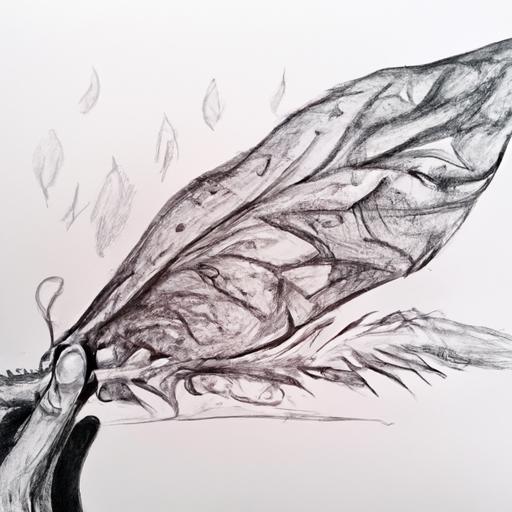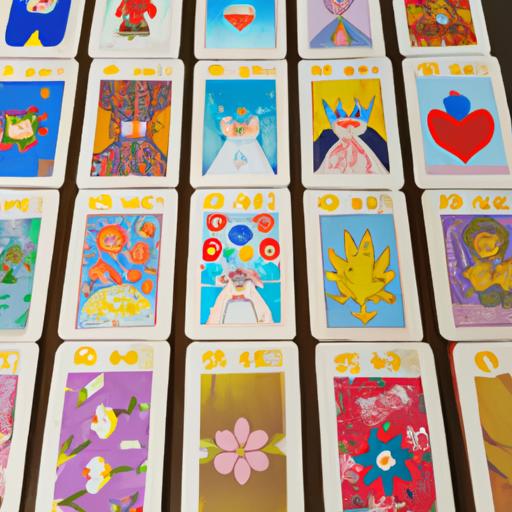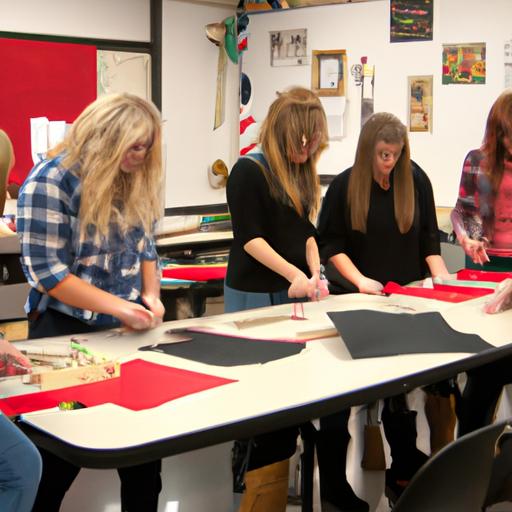Introduction
As we immerse ourselves in a world filled with captivating visuals and artistic expressions, it’s essential to grasp the distinction between media and visual arts. Have you ever wondered what sets them apart? In this article, let’s embark on a journey to unravel the dissimilarities between media and visual arts and understand their unique contributions to the world of creativity.
Media arts encompass a wide array of artistic expressions that utilize various mediums and platforms to convey messages and emotions. From the silver screen to the digital realm, media arts encompass film, television, and digital media. On the other hand, visual arts focus on artistic representations through visual elements and techniques. Paintings, sculptures, and photography are just a few examples of the vast realm of visual arts.
Definition of Media Arts
Media arts, a fusion of technology and creativity, breathe life into stories and ideas. Films transport us to different worlds, television captivates us with serialized narratives, and digital media connects us globally. The incorporation of technology enables media arts to push boundaries and create immersive experiences that resonate with audiences. This dynamic form of art continually evolves, adapting to advancements in technology and captivating viewers through its audiovisual prowess.
Definition of Visual Arts
In contrast, visual arts rely on visual elements to convey emotions and ideas. Paintings, with their vibrant colors and brushstrokes, offer glimpses into the artist’s perspective. Sculptures, crafted meticulously from various materials, invite us to explore shape, form, and texture. Photography captures fleeting moments and encapsulates them in still frames, allowing us to delve into the intricacies of the human experience. Visual arts invite us to see the world through the artist’s eyes, evoking emotions and sparking our imagination.
Key Differences between Media Arts and Visual Arts
While both media arts and visual arts spark our creativity and captivate our senses, several key differences set them apart. Firstly, the medium and platform used in each form of art differ significantly. Media arts rely on screens and speakers, utilizing technology to create immersive experiences, while visual arts find their expression through canvases, clay, and various tangible materials.
Secondly, the purpose and intended audience of media arts and visual arts diverge. Media arts predominantly entertain and inform audiences, aiming to captivate and engage them through narratives and audiovisual stimulation. Visual arts, on the other hand, emphasize the expression of emotions, ideas, and concepts, inviting viewers to interpret and delve deeper into the artist’s intentions.
Lastly, the interaction and engagement with these art forms also vary. Media arts often encourage audience participation, enabling viewers to become active participants in the experience. Visual arts, on the contrary, rely on the viewer’s observation and interpretation, allowing them to engage with the art individually and subjectively.
Stay tuned for the next section, where we’ll explore the similarities and overlaps between media and visual arts, shedding light on the shared aspects of these captivating forms of expression.
Definition of Visual Arts
Artistic representation takes a different form in the realm of visual arts. Visual arts focus on expressing emotions, ideas, and concepts through visual elements and techniques. Let’s delve deeper into the world of visual arts and explore the diverse avenues of creative expression.
A. Explanation of Visual Arts as a Form of Artistic Representation
Visual arts encompass a vast array of artistic expressions that engage our visual senses. Artists utilize various mediums, tools, and techniques to create captivating visual representations that communicate their thoughts and perspectives. Through the use of color, form, texture, and composition, visual artists translate their ideas into tangible forms, inviting viewers to embark on a visual journey of introspection and interpretation.
B. Examples of Visual Arts
The world of visual arts is a vibrant tapestry of creativity, encompassing a multitude of disciplines. Painting, with its rich pigments and brushstrokes, allows artists to capture their visions on canvas, evoking emotions through a symphony of colors. Sculpture, on the other hand, takes shape through the manipulation of materials, enabling artists to breathe life into three-dimensional forms that convey their narratives. Photography freezes moments in time, immortalizing fragments of reality and offering glimpses into the artist’s unique perspective.
C. Emphasis on Visual Elements and Techniques in Visual Arts
Visual arts rely heavily on the mastery of visual elements and techniques to convey their intended messages. Artists skillfully employ color theory, utilizing hues, shades, and contrasts to evoke specific emotions or create a desired atmosphere. Composition plays a crucial role in visual arts, guiding the viewer’s gaze and emphasizing the relationships between different elements within the artwork. Texture, whether tactile or implied, adds depth and tactile qualities to the piece, inviting viewers to engage their senses.
In the next section, we will explore the key differences between media arts and visual arts, shedding light on how these two distinct art forms diverge in their mediums, purposes, and interactions.
Key Differences between Media Arts and Visual Arts
A. Medium and Platform
In examining the dissimilarities between media arts and visual arts, it becomes evident that the mediums and platforms utilized in each form play a significant role in shaping their artistic expression. Media arts harness the power of screens and speakers, creating a captivating audiovisual experience. From the silver screen in cinemas to the television in our living rooms, media arts transport us to different worlds, allowing us to immerse ourselves in stories and narratives. Furthermore, with the advent of digital media, artists can now explore new dimensions of creativity, leveraging technology to push the boundaries of artistic expression.
On the other hand, visual arts find their expression through tangible mediums and platforms. Paintings come to life on canvases, with artists skillfully wielding brushes and pigments to create vibrant and evocative images. Sculptures, crafted from materials like marble, clay, or metal, invite us to explore shape, texture, and form with our senses. Visual arts offer a tactile experience, where the artist’s touch and craftsmanship resonate through the physicality of the artwork. Whether it’s a photograph capturing a fleeting moment or a sculpture inviting touch, visual arts engage our senses in a unique and powerful way.
B. Purpose and Audience
Another distinguishing factor between media arts and visual arts lies in their purpose and the intended audience. Media arts primarily serve the purpose of entertaining and informing audiences. Through films, television series, and digital media, artists aim to captivate viewers, whisking them away into the realms of imagination and storytelling. Media arts often provide an escape from reality, allowing us to experience different cultures, emotions, and perspectives. In addition to entertainment, media arts also serve as a powerful tool for education, disseminating information and raising awareness on various subjects.
Visual arts, in contrast, have a primary purpose of expressing emotions, ideas, and concepts. Artists employ various techniques, styles, and visual elements to evoke feelings, provoke thoughts, and communicate their unique vision. Visual arts encourage introspection and reflection, inviting viewers to interpret and engage with the artwork on a personal level. Each piece of visual art possesses its own narrative, waiting to be discovered and experienced by those who observe it.
C. Interaction and Engagement
The way audiences interact and engage with media arts and visual arts also sets them apart. Media arts often embrace interactivity and audience participation. Whether it’s through interactive installations, virtual reality experiences, or social media engagement, media arts blur the lines between the creator and the consumer. Viewers become active participants, influencing the narrative or outcome, and shaping their own experience. The interactive nature of media arts fosters a sense of connection and engagement, creating a dynamic relationship between the artist and the audience.
In contrast, visual arts primarily engage viewers through observation and interpretation. When encountering a painting, sculpture, or photograph, we embark on a personal journey of exploration. Visual arts invite us to observe the artwork’s visual elements, such as color, composition, and texture, and interpret its meaning through our unique perspectives. The viewer’s engagement with visual arts is subjective and introspective, allowing for a deeper connection with the artwork and the artist’s intentions.
Stay tuned for the next section, where we will explore the similarities and overlaps between media arts and visual arts, discovering the threads that connect these captivating forms of artistic expression.
Similarities and Overlaps between Media Arts and Visual Arts
Artistic expression knows no bounds, and both media arts and visual arts are testament to this fact. Despite their differences, these forms of art share several commonalities and often intertwine in captivating ways.
A. Concept of Artistic Expression
Both media arts and visual arts serve as powerful means of conveying messages and evoking emotions. Whether it’s through a thought-provoking film or a captivating painting, these art forms have the ability to transcend language barriers and communicate ideas that resonate with the audience. They both tap into the human experience, offering unique perspectives, and igniting a range of emotions within us.
B. Utilization of Visual Elements
Visual elements play a crucial role in both media arts and visual arts. Color, composition, form, and perspective are just a few examples of elements that artists harness to create captivating visual experiences. Whether it’s the meticulous placement of objects in a photograph or the skillful use of lighting in a film, these elements shape the narrative and evoke specific emotions, drawing the viewer deeper into the art.
C. Influence and Inspiration
Media arts and visual arts often find inspiration in one another, creating a symbiotic relationship. Visual artists may draw inspiration from films, television shows, or digital media to explore new techniques or narratives. Simultaneously, media artists often find themselves inspired by visual artworks, incorporating their aesthetics and concepts into their creations. This cross-pollination of ideas fuels creativity and pushes the boundaries of both art forms.
In the next section, we will conclude our exploration of the differences and similarities between media arts and visual arts, reinforcing the importance of recognizing and appreciating the unique qualities each form brings to the realm of artistic expression.
Conclusion
Understanding the distinction between media arts and visual arts is pivotal in appreciating the diverse forms of artistic expression that surround us. While media arts engage us through immersive narratives and audiovisual experiences, visual arts invite us to explore emotions and ideas through visual elements and techniques.
By recognizing the unique qualities of each form, we can gain a deeper appreciation for the creativity and skill involved in their creation. Media arts, with their technological advancements and ability to entertain and inform, provide us with captivating stories and experiences. Visual arts, on the other hand, offer us a glimpse into the artist’s perspective and evoke emotions that resonate within us.
In a world where these art forms often intersect and influence one another, it’s important to celebrate their individuality and the distinct ways in which they engage and inspire us. By embracing both media arts and visual arts, we can enrich our lives and expand our understanding of the limitless possibilities of artistic expression.
So, the next time you find yourself immersed in a captivating film or gazing at a breathtaking painting, take a moment to appreciate the unique contributions of media arts and visual arts. Let them transport you, inspire you, and ignite your own creative spark. After all, art has the power to connect us, to stir our souls, and to remind us of the beauty and depth of the human experience.
Thank you for joining me on this journey to explore the difference between media and visual arts. May your artistic endeavors be filled with passion, creativity, and a deep appreciation for the diverse forms of artistic expression that surround us.





